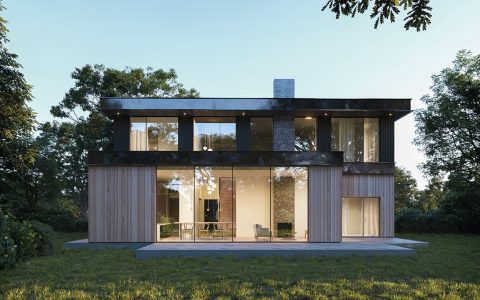An L-shaped house features two wings or sections that meet at a right angle, forming an "L" footprint. This architectural design is popular for its ability to create distinct zones and interact effectively with outdoor spaces.
Key Advantages of L-Shaped Houses
- Creation of Private Outdoor Spaces: The inherent design of an L-shape naturally forms a sheltered area, ideal for a private courtyard, patio, or garden, protected from wind and offering seclusion.
- Enhanced Natural Light and Ventilation: With more exterior wall surface relative to a simple rectangular footprint, L-shaped homes often benefit from increased opportunities for windows on multiple sides of rooms, promoting better natural light and cross-ventilation.
- Effective Zoning of Living Areas: The two wings allow for logical separation of functions. For instance, one wing might house public areas like the living room and kitchen, while the other accommodates private spaces such as bedrooms and bathrooms. This can also be effective for creating a separate guest wing or home office.
- Optimized Views: The configuration can be strategically oriented to maximize views from various rooms, either towards the private courtyard or outwards to the surrounding landscape.
- Site Adaptability: L-shaped designs can be particularly well-suited for corner lots or irregularly shaped plots, making efficient use of available land.
Design and Construction Considerations
- Roof Complexity: The junction where the two wings meet can present roofing challenges, potentially requiring more complex truss designs or valley details, which can impact cost and construction time.
- Internal Circulation: Careful planning is needed to ensure efficient internal flow and avoid long, inefficient corridors, especially if the wings are extensive.
- Foundation and Structure: The non-linear footprint can sometimes lead to more complex foundation work and structural engineering compared to a simple rectangular house, potentially affecting budget.
- Privacy Between Wings: Depending on window placement and the activities within each wing, internal privacy might need careful consideration, ensuring one part of the house doesn't directly overlook another in an intrusive way.
- Orientation for Climate Control: The orientation of each wing relative to the sun's path is crucial for passive heating and cooling. Poor orientation can lead to overheating in one wing or insufficient light in another.
L-shaped houses offer a versatile and appealing design solution, effectively blending indoor and outdoor living while allowing for functional zoning. Careful consideration of the site, climate, and lifestyle needs is key to maximizing the benefits of this architectural style.










